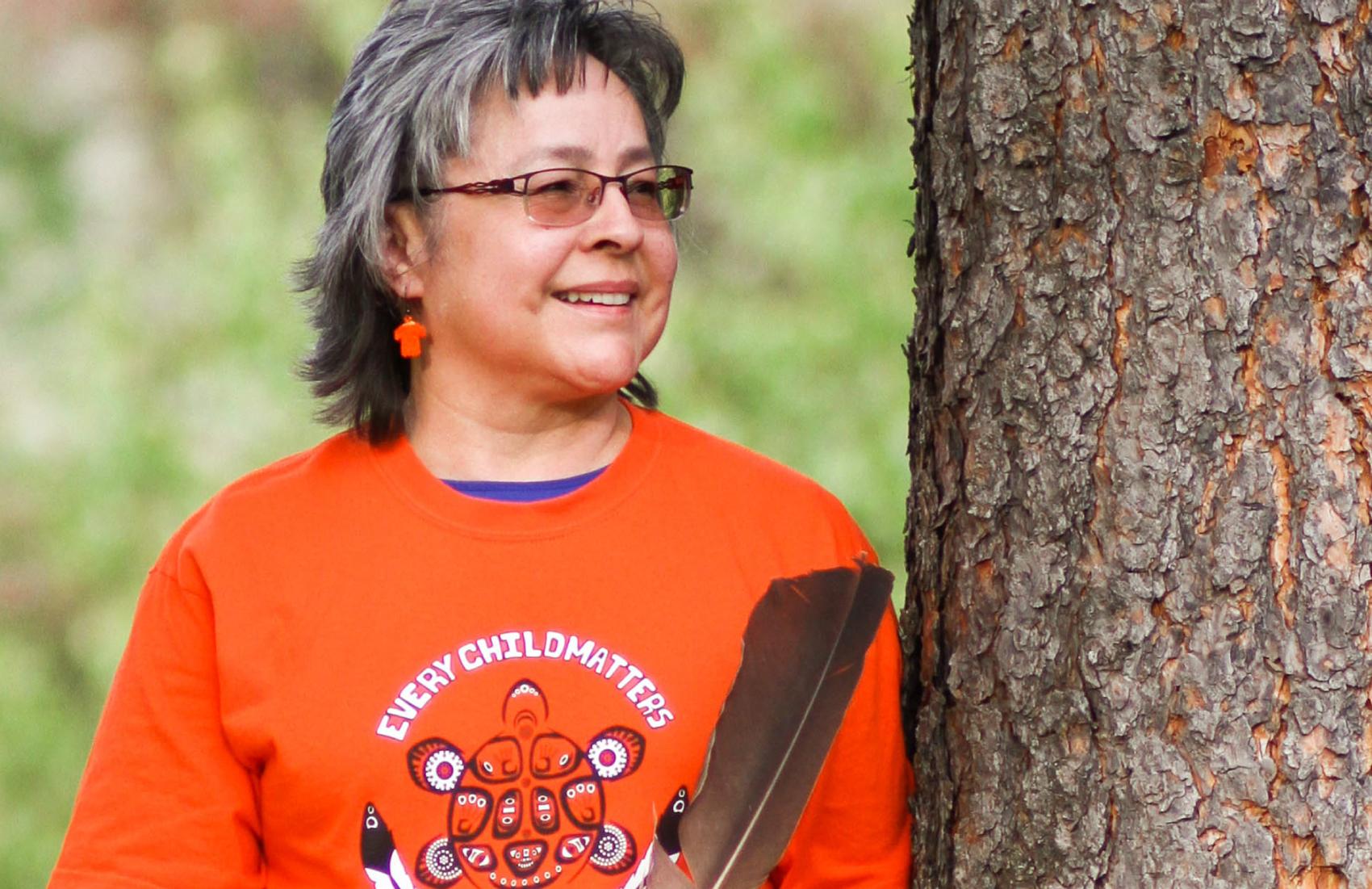3 things you might not know about Orange Shirt Day
By Carolyn Ali

The day that raises awareness about residential schools in Canada was inspired by a heart-wrenching story
Why do people wear orange shirts on September 30? What is the meaning behind the shirts, and what does this bright colour have to do with residential schools in Canada? Here’s a quick primer.
1. Orange Shirt Day references a real orange shirt taken from a residential school Survivor
Now an adult, Phyllis Webstad still remembers the new orange shirt that her grandmother bought for her when she was six years old. She wore it proudly on her first day at a church-run residential school in Williams Lake, BC. But then school authorities stripped her of her clothes, cut her hair and took her shirt away. She never got it back.
“The colour orange has always reminded me of how my feelings didn’t matter, how no one cared,” she writes. “I went to a treatment centre for healing when I was 27 and have been on this healing journey since then. I finally get it, that the feeling of worthlessness and insignificance, ingrained in me from my first day at the mission, affected the way I lived my life for many years.”

2. The day aims to raise awareness of the residential school system in Canada
Webstad is one of more than 150,000 First Nations, Métis and Inuit children who attended Indian residential schools in Canada between the late 1800s and 1996. These schools were operated by the Canadian government and church organizations and were part of Canada’s official policy that aimed to eliminate Indigenous Peoples’ languages and cultures and, through assimilation, cause them to cease to exist as distinct peoples.
It is estimated that between four to six thousand children died at residential schools.
3. Wearing an orange shirt reminds us of the impact of residential schools still felt today
Residential schools are not far in the past; the last one closed in 1996. As Webstad’s story attests, many Survivors are still coping with the trauma from their time at the schools, including physical and sexual abuse. The intergenerational impact is still felt through communities.
Orange Shirt Day was created as an opportunity to discuss the effects of residential schools and their legacy. It honours the experiences of Indigenous Peoples, celebrates resilience and affirms a commitment that every child matters.
Learn how to participate in Orange Shirt Day on September 30
Carolyn Ali is a writer for UBC’s Brand and Marketing. This article was updated on September 20, 2023, from its original publication on September 9, 2020. Feel free to republish the text of this article, but please follow our guidelines for attribution and seek any necessary permissions before doing so. Please note that images are not included in this blanket licence.


